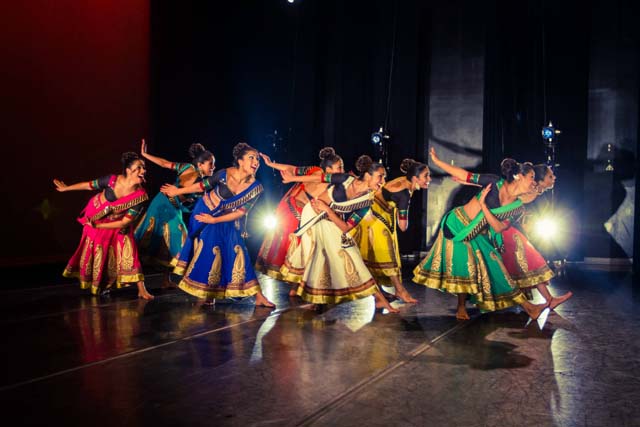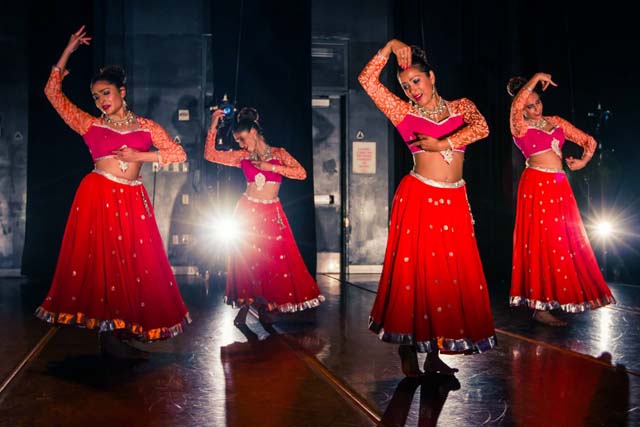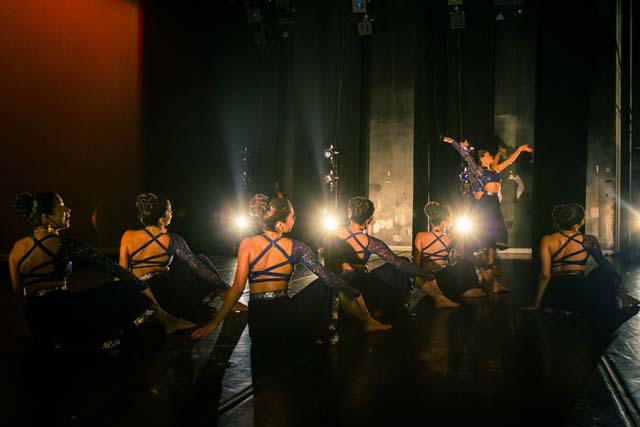
Sa Dancers: Dancing the Stories of Life, Bollywood-style
“For most of the dancers, our childhoods were tinged with nostalgia for a life we never actually had,” says Payal Kadakia, New York based dancer and artistic director of Sa Dance Company. “Our memories are lush with images, songs, stories we heard from our grandparents, parents, or picked up during extended trips to India.”
The dancers have varied dance experiences from Bharatanatyam, Kuchipudi, Odissi, Kathak, to folk dances like Garba, Bhangra, Rajasthani, as well as Jazz, Ballet and Hip-Hop. As she adds, “it’s about time we address this fragmented, dislocated subconscious. Through dance we are attempting just that; not to create a new identity but to shape the one we have.”
The Sa Dance Company recently presented the New York City Showcase at the Ailey Citigroup Theater, presenting these varied juxtapositions of art and identity.
Here Payal Kadakia answers the questions we all have about dance and dancers and the passion which makes it all happen. Last week the Sa Dancers participated in ‘Dance off the Grid’ at Summerstage at the East River Park, bringing their fusion dance sensibilities to yet another audience.
Talking Dance with Payal Kadakia of Sa Dancers

Q: Where did you get the inspiration for this show?
This show was the culmination of Sa’s work over the past several years. Each piece has its own distinct feel and inspiration. iVillage was from my parents and childhood, Inseparation was from experiences of love, passion, and hope, and BollySa was a celebration!
Music to me is very powerful and is the catalyst for what inspires new movement and choreography within me. When I hear music, I begin to visualize concepts to convey particular emotions and stories which usually are rooted in my daily life. I like to find songs that relate to each other and sew them together to create a quilted story.
Q: How is this show different from your previous SA shows?
My style has matured as I have and I’ve grown up as a dancer, choreographer and woman. This show has everything we loved about the first show, but explores a whole new world of music and features an amazing new group of dancers. We show a Sa-esque version of Bollywood and also have experimented with some modern moment in our piece, Flight. There is also a lot of strength and power in this show which I think shows the growth of all the dancers and the company as a whole.
Q: How many dancers in total did you have? Do they come with their own dance backgrounds?
There are ten girls with backgrounds in a variety of forms: Bharatanatyam, Kuchipudi, Odissi, Kathak, Garba, Bhangra, Rajasthani, as well as Jazz, Ballet and Hip-Hop
My dancers come to Sa organically, and each one fits together with the company. Nevertheless, no two dancers are the same and I try to showcase each dancer’s unique talents in our performances. A few of the girls are trained in Bharatanatyam while one in Odissi and another in Kuchipudi and each dancer has their own X Factor which is my job to find and cultivate. It brings me so much joy to be able to dance with so many individually talented dancers. It is beautiful to see all of them dance together in symphony, while each displaying their own presence.
A lot of Indian American artist’s especially second generation, feel they have evolved- independent of their Indian origins and distinct from American culture. Most claim to have their own style, their own story; especially filmmakers. Do you, as a dancer feel the same?
I believe my dance style is authentically me. Every artist is unique and their work is always a reflection of their background. There is no way I can separate my heritage, both Indian and American, from the work I create.

Q: How much has globalization of Bollywood dance form helped in terms of awareness?
I think Bollywood dance will always be a bit “commercial,” given its roots within entertainment. I am very happy to see that awareness of Bollywood has also opened doors internationally for India’s classical and folk arts. Part of the Sa’s goal is to continually make pathways for introducing and cultivating these arts here in the States. Now, even more has arisen from Bollywood, such as “Bolly-fit” classes and “Bolly-aerobics.” If we continue to familiarize the world with what India has to offer, we will be able to keep it alive.
Q: There are so many Indian dance companies here – what makes yours different?
Just as no one painter or writer is exactly the same, no one dance company is. We all have found a common interest and passion in dance and showcase it with our own aesthetic, each unique to the choreographer, dancers, and company.
Alvin Ailey has served as one of my strongest sources of inspiration. Like him, I wanted to help the world understand culture through dance the way he has done for other generations.. After you walk out of the Ailey Showcase, you cannot help but feel you have just come from experiencing the director’s rich culture and communal values. A critical part of communicating culture is presentation and professionalism, which is something I have tried to do for the Indian culture by creating Sa.
Q: What’s next for you and Sa?
The goal of Sa long-term is to build a platform for dancers and artists to continue to cultivate their Indian-rooted talents in America through a professional platform. I’d love to create something with the same prestige as Juilliard or Tisch one day so any aspiring Indian artist has a place to go and study and master their craft.
Related Articles:
Sa Dancers Take You Home
Sa Sensational!
Indian Dance – Out of the Box
